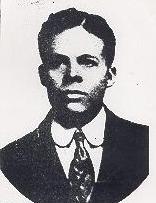
Afroasiatic (Afro-Asiatic), also known as Afrasian and in older sources as Hamito-Semitic (Chamito-Semitic) or Semito-Hamitic, is a large language family of about 300 languages that are spoken predominantly in West Asia, North Africa, the Horn of Africa and parts of the Sahel. Though estimations vary widely, it is believed by scholars to have been spoken as a single language around 12,000 to 18,000 years ago, making it the oldest established language family in the world.

Carl Friedrich Michael Meinhof was a German linguist and one of the first linguists to study African languages.
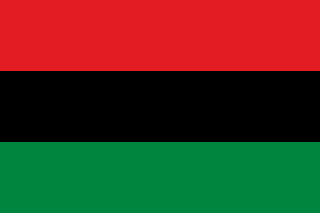
Afrocentrism is an approach to the study of world history that focuses on the history of people of recent African descent. It is in some respects a response to global (Eurocentric) attitudes about African people and their historical contributions; it seeks to correct what it sees as mistakes and ideas perpetuated by the racist philosophical underpinnings of western academic disciplines as they developed during and since Europe's Early Renaissance as justifying rationales for the enslavement of other peoples, in order to enable more accurate accounts of not only African but all people's contributions to world history. Afrocentricity deals primarily with self-determination and African agency and is a Pan-African point of view for the study of culture, philosophy, and history.

Scientific racism, sometimes referred to as race biology, is a pseudoscientific belief that empirical evidence exists to support or justify racism, racial inferiority, or racial superiority. Historically, scientific racism received credence throughout the scientific community, but it is no longer considered scientific.

Hubert Henry Harrison was a West Indian-American writer, orator, educator, critic, and race and class conscious political activist and radical internationalist based in Harlem, New York. He was described by activist A. Philip Randolph as "the father of Harlem radicalism" and by the historian Joel Augustus Rogers as "the foremost Afro-American intellect of his time." John G. Jackson of American Atheists described him as "The Black Socrates".

Charles Gabriel Seligman FRS was a British physician and ethnologist. His main ethnographic work described the culture of the Vedda people of Sri Lanka and the Shilluk people of the Sudan. He was a Professor at London School of Economics and was highly influential as the teacher of such notable anthropologists as Bronisław Malinowski, E. E. Evans-Pritchard and Meyer Fortes all of whose work overshadowed his own. He was a proponent of the Hamitic hypothesis, according to which, some civilizations of Africa were thought to have been founded by Caucasoid Hamitic peoples.
This is a list of media serving the Omaha metropolitan area in Omaha, Nebraska and Council Bluffs, Iowa.
Joel Augustus Rogers was a Jamaican-American author, journalist, and historian who contributed to the history of Africa and the African diaspora. After settling in the United States in 1906, he lived in Chicago and then New York City. He became interested in the history of African Americans in this country. His research spanned the academic fields of history, sociology and anthropology. He challenged prevailing ideas about the social construction of race, demonstrated the connections between civilizations, and traced achievements of ethnic Africans, including some with mixed European ancestry. He was one of the earliest and greatest popularizers of African history in the 20th century.
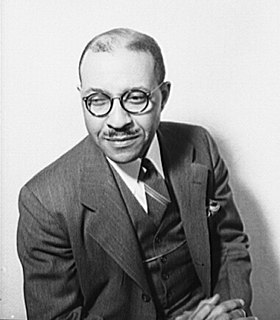
Charles Spurgeon Johnson was an American sociologist and college administrator, the first black president of historically black Fisk University, and a lifelong advocate for racial equality and the advancement of civil rights for African Americans and all ethnic minorities. He preferred to work collaboratively with liberal white groups in the South, quietly as a "sideline activist," to get practical results.

Alain Leroy Locke was an American writer, philosopher, educator, and patron of the arts. Distinguished as the first African-American Rhodes Scholar in 1907, Locke was the philosophical architect —the acknowledged "Dean"— of the Harlem Renaissance. As a result, popular listings of influential African Americans have repeatedly included him. On March 19, 1968, the Rev. Dr. Martin Luther King, Jr. proclaimed: "We're going to let our children know that the only philosophers that lived were not Plato and Aristotle, but W. E. B. Du Bois and Alain Locke came through the universe."

Abram Lincoln Harris, Jr. was an American economist, academic, anthropologist and a social critic of blacks in the United States. Considered by many as the first African American to achieve prominence in the field of economics, Harris was also known for his heavy influence on black radical and neo-conservative thought in the United States. As an economist, Harris is most famous for his 1931 collaboration with political scientist Sterling Spero to produce a study on African-American labor history titled The Black Worker and his 1936 work The Negro as Capitalist, in which he criticized black businessmen for not promoting interracial trade. He headed the economics department at Howard University from 1936 to 1945 and taught at the University of Chicago from then until his death. As a social critic, Harris took an active radical stance on racial relations by examining historical black involvement in the workplace, and suggested that African Americans needed to take more action in race relations.

The Harlem Renaissance was an intellectual, social, and artistic explosion centered in Harlem, New York, spanning the 1920s. At the time, it was known as the "New Negro Movement", named after The New Negro, a 1925 anthology edited by Alain Locke. The movement also included the new African-American cultural expressions across the urban areas in the Northeast and Midwest United States affected by the Great Migration, of which Harlem was the largest.

John Gibbs St. Clair Drake was an African-American sociologist and anthropologist whose scholarship and activism led him to document much of the social turmoil of the 1960s, establish some of the first Black Studies programs in American universities, and contribute to the independence movement in Ghana. Drake often wrote about challenges and achievements in race relations as a result of his extensive research.
The Civil rights movement in Omaha, Nebraska, has roots that extend back until at least 1912. With a history of racial tension that starts before the founding of the city, Omaha has been the home of numerous overt efforts related to securing civil rights for African Americans since at least the 1920s.
African Americans in Omaha, Nebraska are central to the development and growth of the 43rd largest city in the United States. The first free black settler in the city arrived in 1854, the year the city was incorporated. In 1894 black residents of Omaha organized the first fair in the United States for African-American exhibitors and attendees. The 2000 US Census recorded 51,910 African Americans as living in Omaha. In the 19th century, the growing city of Omaha attracted ambitious people making new lives, such as Dr. Matthew Ricketts was the first African American to graduate from a Nebraska college or university, and Silas Robbins was the first African American to be admitted to the bar in Nebraska. In 1892 Dr. Ricketts was also the first African American to be elected to the Nebraska State Legislature. Ernie Chambers, an African-American barber from North Omaha's 11th District, became the longest serving state senator in Nebraska history in 2005 after serving in the unicameral for more than 35 years.
The question of the race of ancient Egyptians was raised historically as a product of the early racial concepts of the 18th and 19th centuries, and was linked to models of racial hierarchy primarily based on craniometry, anthropometry and genetics. A variety of views circulated about the racial identity of the Egyptians and the source of their culture. Some scholars argued that ancient Egyptian culture was influenced by other Afroasiatic-speaking populations in Northeast Africa, the Maghreb, or the Middle East, while others pointed to influences from various Nubian groups or populations in Europe. In more recent times Afrocentric writers continued to challenge the mainstream view, some focusing on questioning the race of specific notable individuals such as the king represented in the Great Sphinx of Giza, native Egyptian pharaoh Tutankhamun, and Greek Ptolemaic queen Cleopatra VII.
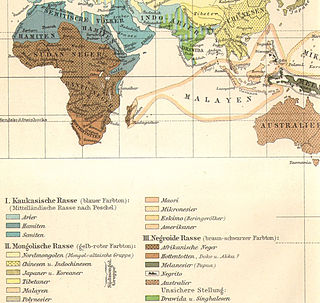
Hamites is a historical term in 19th and early 20th century ethnology and linguistics for a division of the Caucasian race and the group of related languages these populations spoke. The appellation Hamitic was applied to the Berber, Cushitic, and Egyptian branches of the Afroasiatic language family, which, together with the Semitic branch, was thus formally labelled "Hamito-Semitic". However, since the three Hamitic branches have not been shown to form an exclusive (monophyletic) phylogenetic unit of their own, separate from other Afroasiatic languages, linguists no longer use the term in this sense. Each of these branches is instead now regarded as an independent subgroup of the larger Afroasiatic family.
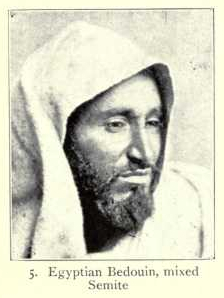
The Arabid race is a historical term for a morphological subtype of the Caucasoid race, as used in traditional physical anthropology.
The Misri legend is an origin myth common to a number of East African communities. In it, it is usually claimed that the community originated in a land called Misri located in the north. This land is in many accounts identified or associated with Egypt and sometimes an association with one of the lost tribes of Israel is implied and occasionally directly stated.



